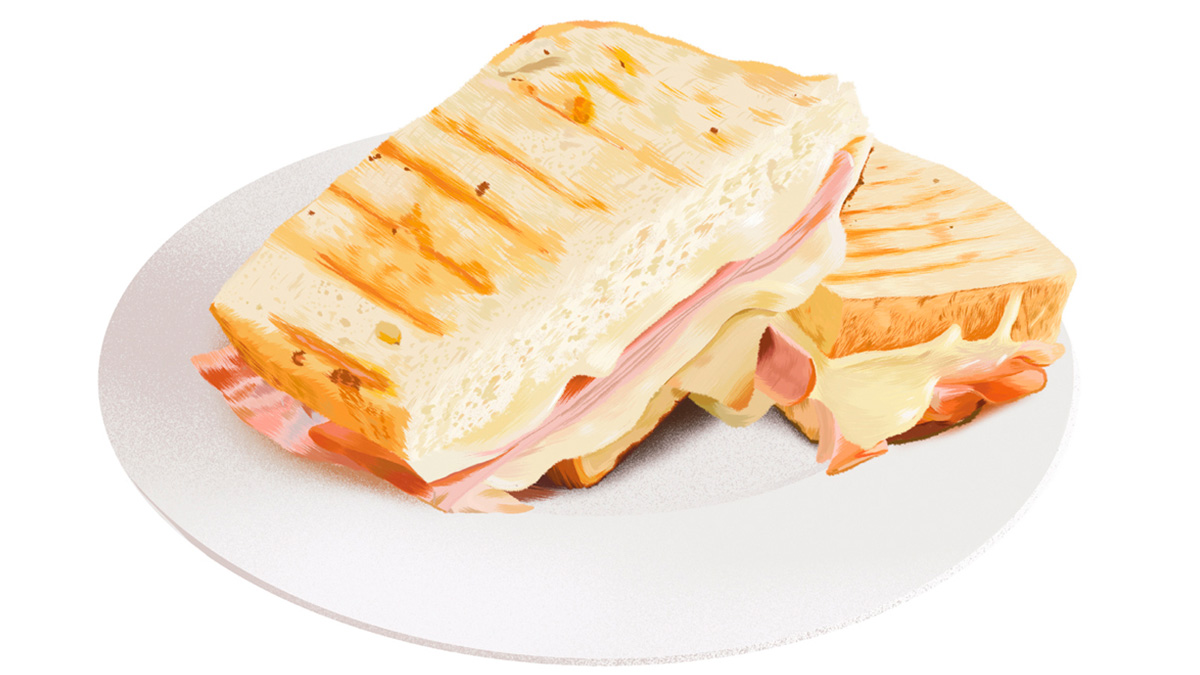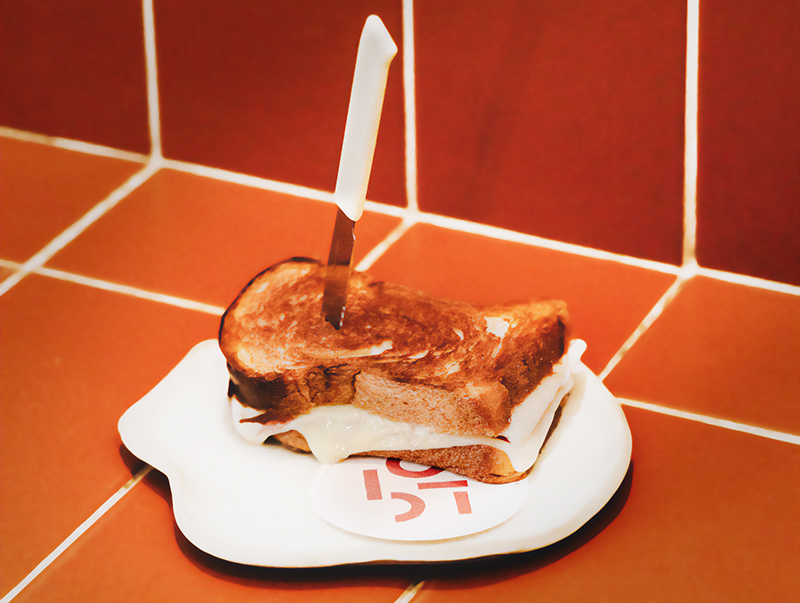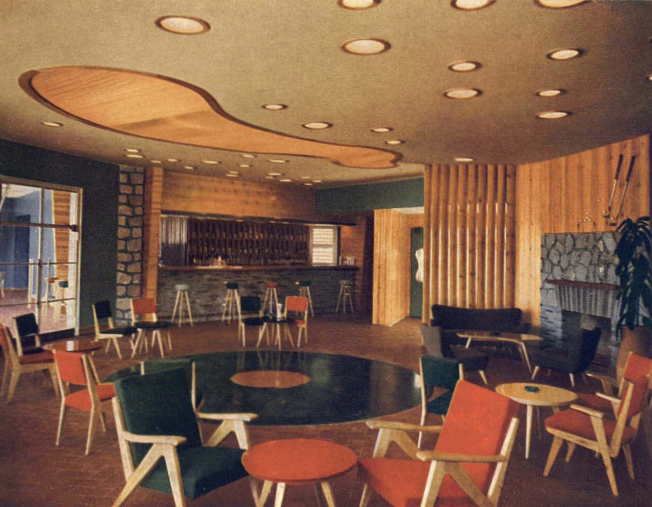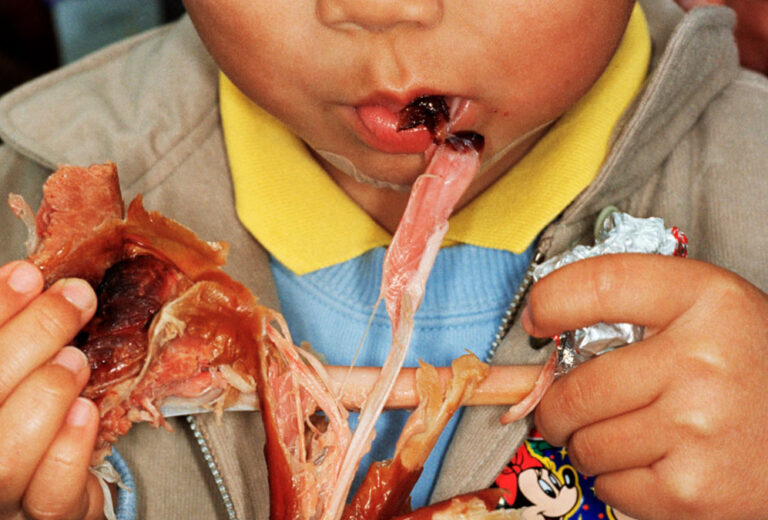Click here to read the Spanish version.
The history of the sandwich is linked to what might be called “sports cuisine”. If you were to travel back in time to the New York ballparks of the late 19th century, you’d find a dapper, fervent crowd, who would stave off hunger with ham and cheese sandwiches. Going to a ballpark in New York was tantamount to eating, a habit that has endured to this day.
Before hot dogs became the canonical ballpark menu, a curious ham and cheese sandwich was being served in ballparks in the late 19th century and won the favour of the fans. The idea came from Harry M. Stevens, an English immigrant who got the idea the first time he went to a baseball game. “The games usually start in the middle of the afternoon,” he said years later in an interview, “and that means the spectator has already had lunch. The fresh air gives him an appetite and he wants to have something to satisfy that craving before he goes home for dinner”. So he became the world’s largest sports caterer. And its success has crossed borders.
At the counters in the back of the Polo Grounds you could find a banker eating a ham and cheese sandwich with a beer and, next to him, a truck driver scarfing down the same menu. From the stadiums of New York to the racetracks of Mexico, Stevens served up to 250,000 people in a single summer afternoon.
Maybe the simple idea of sandwiching ham and cheese between two slices of bread happened in several places at once. The French boast of their croquemonsieur, essentially a mixed sandwich, browned on both sides, with strips of gruyère and a piece of ham. Its “inventor” was Michel Lunarca, who in 1910 started serving it at the brasserie Le Bel-Âge, the fashionable café on the boulevard des Capucines. Lunarca took over the business when the owner died without heirs.
His success must have annoyed the other restaurateurs in the neighbourhood, who saw him as a careerist with no pedigree in the kitchen. They circulated the rumour that Michel, who had been the assistant to an executioner, had murdered the owner, and that he served human flesh in his establishment. They nicknamed him ‘the cannibal‘. Of course, Michel was undaunted and responded to the rumours with a boutade: on one occasion when one of his customers asked him about the contents of the sandwich, Lunarch jokingly replied that it contained man’s meat, namely “gentleman’s meat”. There was another provocation: he used slices of crustless white bread, in the English style – so reviled by the French – instead of baguette, which he had run out of. Thus the croquemonsieur became popular for the first time.
Donde se encuentran las primeras referencias al sándwich mixto con dicho nombre es en Cuba. Cabe pensar que la onda expansiva del béisbol fue responsable de que la isla caribeña importase ese delicioso emparedado: allí iban a jugar los jugadores negros estadounidenses huyendo del racismo, o durante el parón invernal de sus ligas. Al mismo tiempo, la burguesía local, más afecta a EE UU que a Europa, miraba con simpatía aquel deporte deplorado por la administración ocupante española.
The ham and cheese sandwich, which the island’s cafeterias began to serve with great success and which would lead to the famous Cuban sandwich, must have been introduced hand in hand with baseball. Another possibility is the constant movement of Cuban workers between the late 19th and early 20th centuries to work in the tobacco industry in Tampa and Key West, Florida.
The 1930s brought an important innovation: the invention of a machine capable of industrially slicing bread. With it, commercial sliced bread was born. Sandwiches became fast food, the consumption of bread rose and, along with it, spreads such as marmalade.
The national expansion of the bikini
The mixed sandwich began to spread in Spain with the rise of the cafeterias during the 1950s. Manila, Nebraska and Fuentesila were part of the constellation of legendary cafeterias that emerged in Madrid during those years, and where the mixed sandwiches began to win the favour of the clientele. But how did this appetising sandwich come to be known as the “bikini” in Catalonia?
In 1953, the Sala Bikini opened its doors in Barcelona’s Diagonal, which aspired to recreate the atmosphere of American bars, incorporating novel attractions such as a mini-golf course, terrace and bowling alley. There, everything from the Seat 600 to new dances such as the yenka and the twist were presented to society, as well as the house speciality: a version of the French croquemonsieur, without grilled cheese on top. The popularity of that sandwich was such that in all the bars of Barcelona and Catalonia the ham and cheese sandwich began to be known as the “bikini”.
And it is not the only variant. The Argentinians call it “fosforito” (with puff pastry). The Mallorcans add sobrasada and American cuisine, always so excessive, takes the croquemonsieur to the extreme by dipping it in beaten egg and frying it, in what they call the Montecristo sandwich. More or less fortunate, baroque or calorific versions, in short, of that simple sandwich that delighted baseball fans more than a hundred years ago on cold afternoons at the game.







